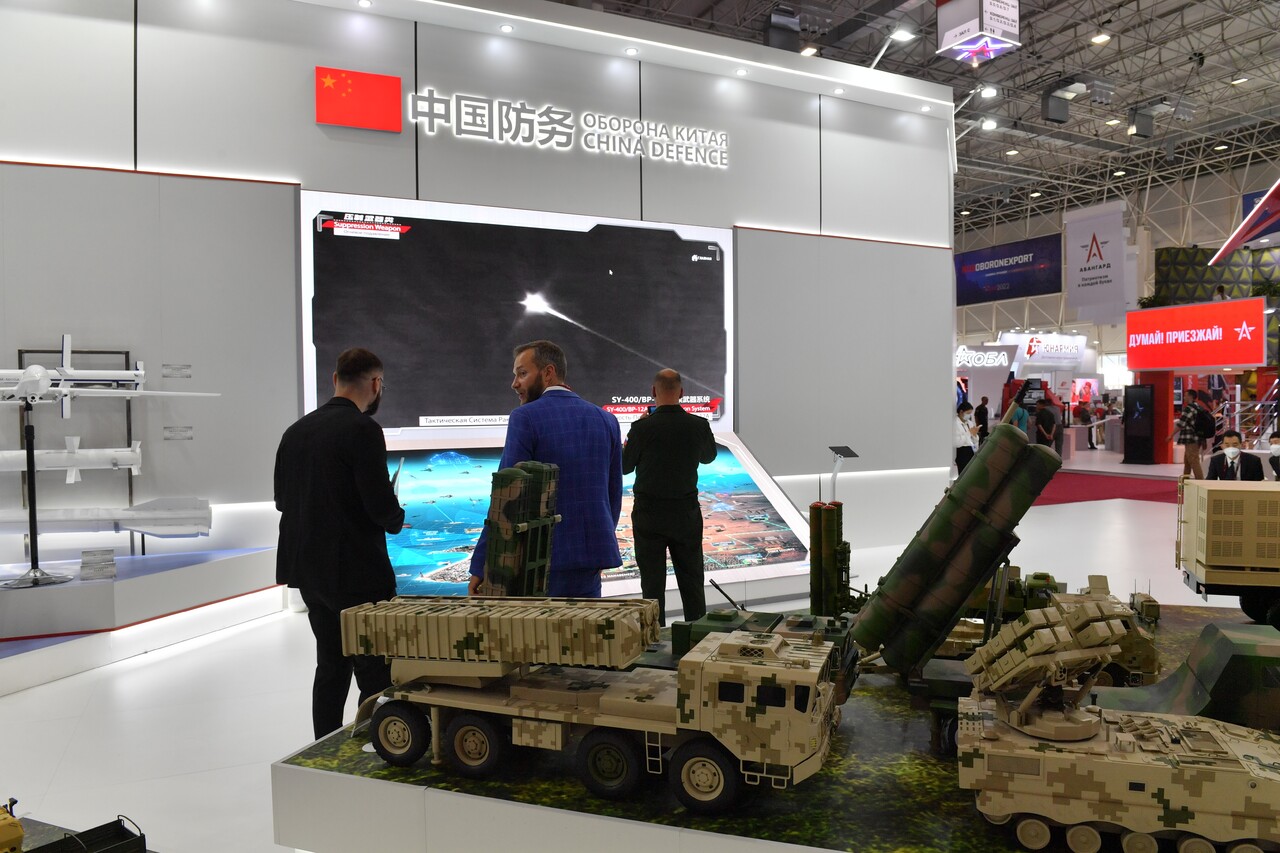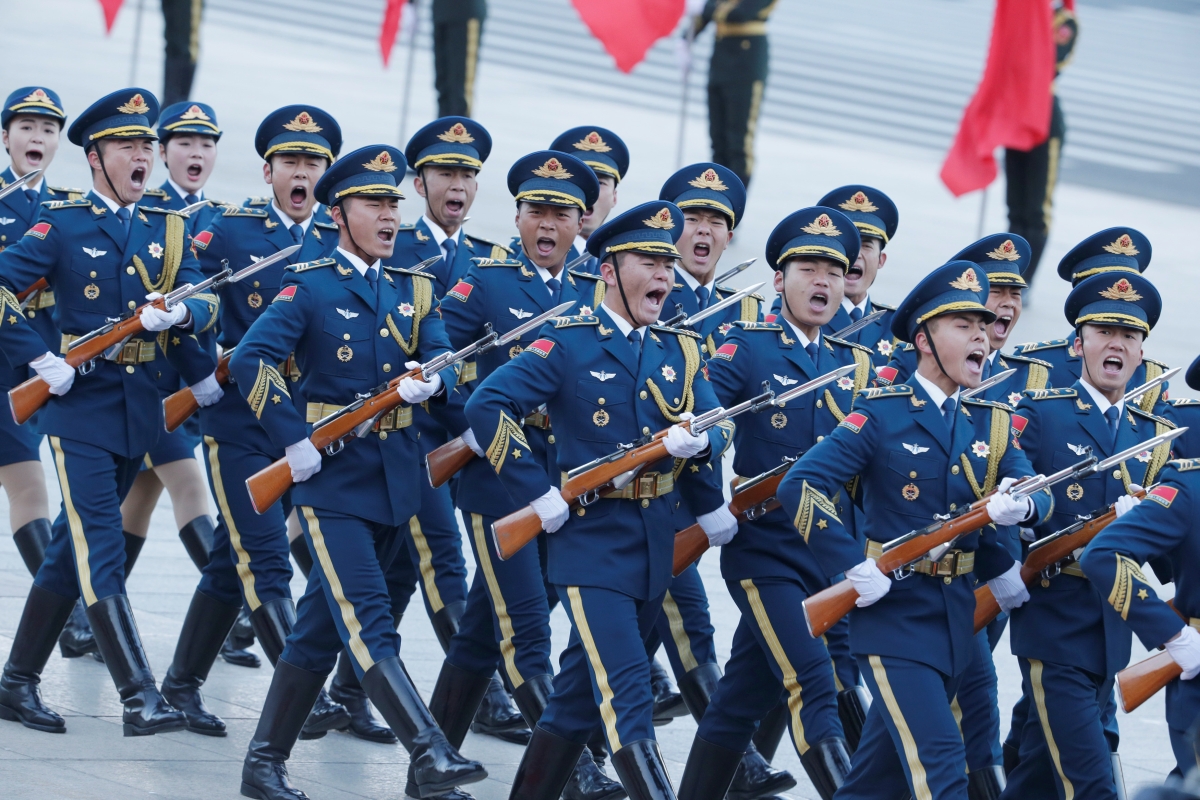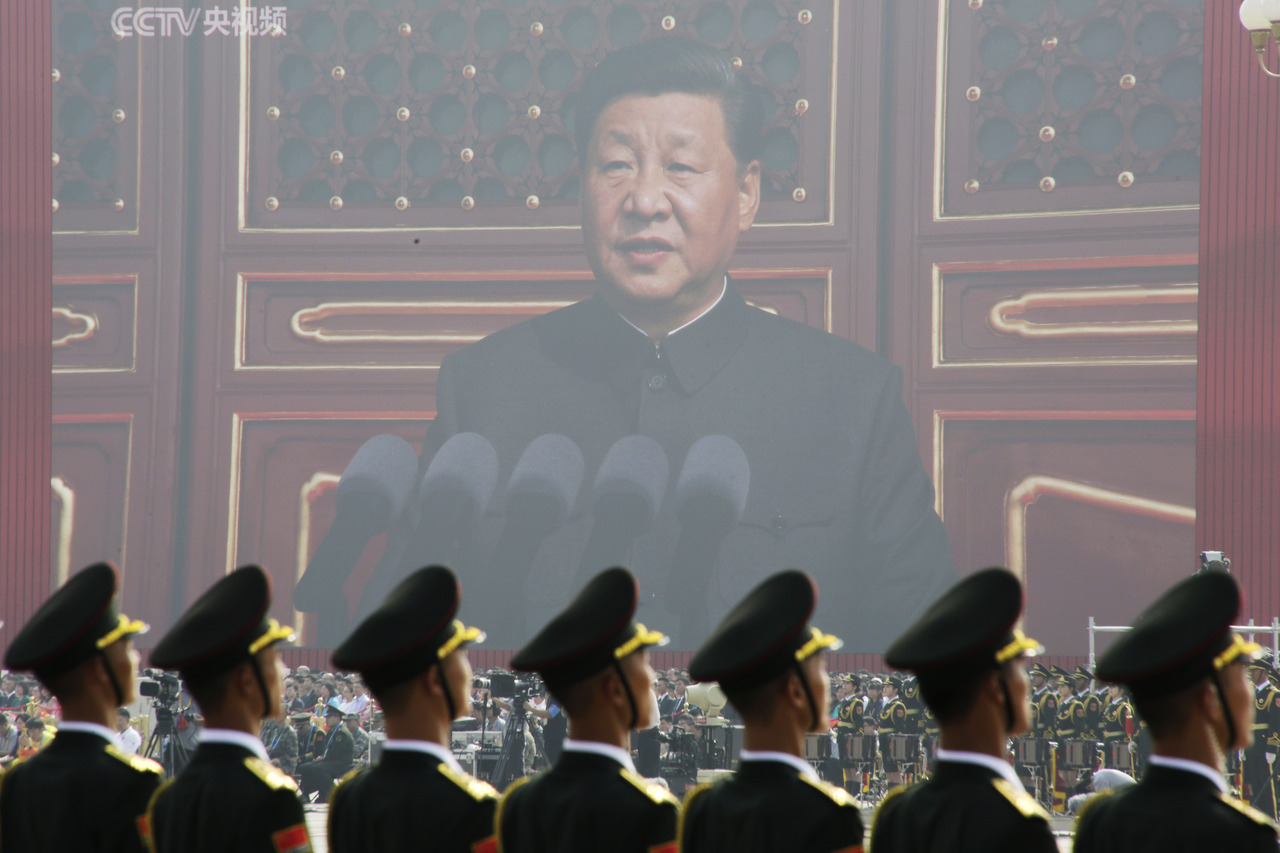Trends Changing in China's Defence Spending
Despite the projected reduced rate of economic growth in China in the near term, the ongoing increase in defence spending over the past dozen years will continue. However, the Chinese armed forces may find it difficult to acquire technology, not least because of restrictions by the European Union and the U.S. It is important to the EU’s interests to strengthen controls on cooperation between EU companies and academia with Chinese partners on dual-use items, among other actions.
 Komsomolskaya Pravda / Russian Look / Forum
Komsomolskaya Pravda / Russian Look / Forum
China’s defence spending falls into two categories: the military budget, which funds the People’s Liberation Army (PLA), and other spending such as on intelligence services. This division, as well as limited access to data, makes it difficult to assess the scale of real defence spending. According to the U.S. Department of Defence, the PLA has about 2 million soldiers and is the largest army in the world. It comprises a land force of just under one million soldiers (13 army groups), a navy (more than 370 ships), an air force (around 2,400 combat aircraft), a strategic missile force (around 350 intercontinental ballistic missiles), and a strategic support force (responsible for space, cyber, electronic warfare, information, telecommunications, and psychological warfare).
The Military Budget and Its Implementation
Between 2013 and 2022, official spending on the armed forces almost doubled, with an average annual increase in outlays of around 6%. During a session of the Chinese parliament in March this year, the Chinese authorities announced that the defence budget would be 7.2% higher year-on-year in 2023, amounting to around $225 billion. This means that China ranks first in Asia in terms of defence spending and second in the world behind the U.S.
Outside the military budget is the funding of the internal security apparatus, for example, the People’s Armed Police, the political police, as well as, for example, the local fishing militias (one of the three naval formations) operating on behalf of China in the disputed waters of the South China Sea, including against the Philippines. However, these funds are under the control of the Central Military Commission (CMC) and are allocated by it for defence-related tasks. The data most likely also do not account for the activities of the so-called civil-military fusion, meaning the use of civilian technologies for military purposes, for example, in space research and semiconductors. This also includes technologies acquired abroad through company acquisitions and academic collaborations. If these areas were included, the value of defence spending would be much higher. The Stockholm International Peace Research Institute (SIPRI), estimates it at $290 billion, while the U.S. administration speculates that it could be as high as $700 billion. The latter figure would be close to U.S. spending (its military budget for 2023 is around $800 billion). When analysing Chinese defence spending, it is important to take into account, for example, the relatively low salaries in the military (PLA’s officers earn about a quarter less than U.S. officers) and administrative costs, as well as the fact that a large proportion of equipment purchases are made in China. In this context, the Heritage Foundation points out that the “purchasing power” of the PRC’s official arms budget compared to the U.S. is almost $500 billion.
Further complicating the assessment of defence spending is the lack of up-to-date and reliable data. China does not regularly provide a breakdown of budget allocations by type of armed forces or spending purpose. In 2020, when it last reported accurate data to the UN's military expenditure database, the majority of funds were spent on procurement (around
$67 billion), operations and maintenance of material assets (around $60 billion), and personnel (around $53 billion). In its latest white paper on national defence published in June 2019, the PRC Ministry of Defence reported that between 2010 and 2017, the share of equipment purchases in spending increased from more than 33% to more than 41%. The share of procurement spending is systematically increasing, with the largest being for naval, space, or radar technology. Funds are also being used to increase military salaries, upgrade equipment, exercise conditions for units, as well as humanitarian missions.
Defence spending is a process involving many political and military institutions. The organisation of tenders and the setting of technological developments are handled by: The State Administration for Defence Science, Technology and Industry (operating within the Ministry of Industry and Information Technology) and the CMC, mainly the departments of logistics and equipment development. Regional cells in the commands of the five theatres of war also participate. This allows commanders to influence the funding of specific forces, selected projects, and units in the regions. However, this increases the likelihood of corruption.
PRC Defence Industry
Most of China’s military budget is spent in China. According to SIPRI data, in 2021, Chinese companies (NORINCO, AVIC, CASC, CETC, CASIC, respectively) ranked 7th to 11th among the world’s largest defence companies. Although only some components (e.g., aircraft engines) are imported from other countries, cooperation with foreign countries is important for the development of China’s defence industry. The China’s ambition is to create a self-sufficient defence sector, using modern technology, cooperating with the civilian sector. The PRC also seeks to limit the transfer of military sector technology abroad concerning, among other things, dual-use items. The 2020 Export Control Law requires Chinese exporters to declare the purpose for which the items are to be used by recipients.
The U.S. Department of Defence identifies as the most important projects the development of military aviation (including J-20 fighters), navy (e.g., Renhai destroyers, Yushen amphibious ships, or Jiangkai III frigates), and strategic forces (construction of new silos and intercontinental missiles). An important part of the arms sector is the manufacture of drones, of which China is the world’s second-largest producer (after the U.S.) and DJI the most important exporter. Several Chinese companies have already been sanctioned by the U.S. for their involvement in drone production chains sent to Russia, among others.
Conclusions
The increase in China’s defence spending is due to the CCP leadership’s negative assessment of the international situation and China’s environment. The PRC’s economic difficulties with its growing rivalry with the U.S. threaten the party’s plans and thus its hold on power. Therefore, the CCP prioritises increasing the capacity of the army, and security spending will increase despite the problems of the Chinese economy. This is linked to China’s pursuit of political objectives in the Taiwan Strait, the South China Sea, and other areas, which may be critical to the EU’s strategic interests.
Although China meets most of its armaments needs with the help of its domestic industry, particularly in the high-tech aspect, the EU has the potential to limit its access. It should make use of it in view of the increasing threats from China to the Union’s security, including economic security. This concerns business and scientific cooperation, beneficial for Chinese entities, with their counterparts from EU states, aimed at acquiring technology or dual-use products, as well as hacking attacks on European companies (e.g., the Dutch chip designer NXP). Measures in this area, including, for example, export restrictions, are emphasised in the EU’s economic security strategy presented by the European Commission in June this year. Joint engagement with the U.S. in a dialogue with China on regulating the use of artificial intelligence may also be beneficial to the EU. It cannot be ruled out that economic problems and the negative attitude of some countries towards cooperation with China (including the U.S. and a large group of EU members) will in the long-term limit China’s ability to acquire dual-use technology and thus delay the development of the capabilities of the Chinese armed forces. This, however, requires the development in the EU of rules for cooperation with business (including an export control system), which is still largely interested in having a presence in the Chinese market.
From Poland’s perspective, it is advisable to support EU-NATO cooperation aimed at countering Chinese threats related to the purchase or theft of military and dual-use technologies. The forum for such cooperation could be the EU-U.S. Trade and Technology Council. It is also in Poland’s interest to seek the inclusion of Chinese companies supporting the Russian arms sector in the next packages of EU sanctions on Russia.





